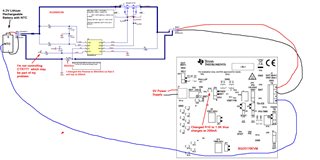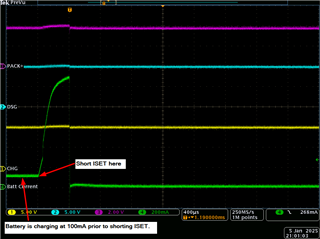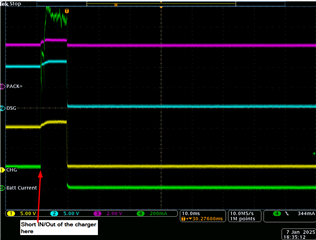Other Parts Discussed in Thread: BQ25170, BQ2980
Tool/software:
I have both the BQ25170 EVM and the BQ2980EVM now in my possession. Per your comment, I did change the current sense resistor on the 2980 EVM to 90mOhm which went smooth so I don't think this is causing me problems. I am running into odd behavior. I have a rechargeable lithium that has a thermistor in it so it is a 3 wire battery consisting of Batt+, Batt-, and TS(thermistor). Let me tell you the scenario that works. I am using a power supply set at 5V to power up the BQ25170 charger board (J1). When I connect my lithium to the BQ25170 as follows: Battery+ to J2 Out (Bat+), Battery- to J2 GND(Bat-) and the TS to J2 TS, the battery charger works fine. My battery is charging at 200 mA because I have ISET at 1.5K. This is expected operation. Also, there are 2 leds on the BQ25170, PG and STAT and both are on solid green.





